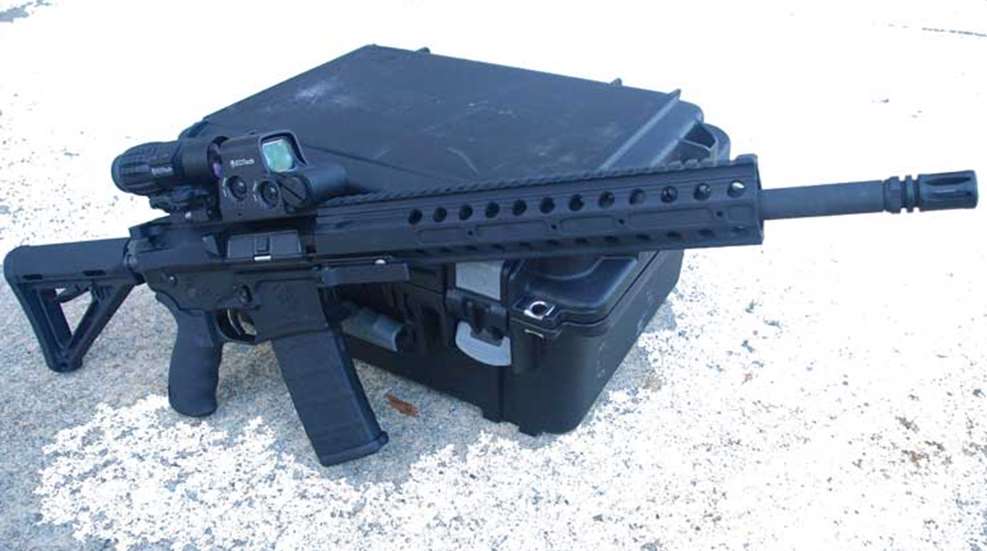
The AR-pattern rifle has many positive characteristics, but extreme compactness is not one of them. In its original military-configuration form as the 5.56x45mm M16, the rifle featured a 20" barrel and a fixed stock. Carbine variants of the design (culminating in the M4 Carbine of today) attempted to bring down the size of the firearm by employing shortened gas systems and barrels as well as collapsible stock systems, but the receiver extension/buffer tube assembly design of the AR prevented the design from being shortened further (apart from some more esoteric solutions such as full folding stock systems that either move the recoil spring assembly above the barrel or fold the actual buffer system and render the AR as a single-shot until unfolded).
So, is there another way to take down the size of the AR, one that requires some “outside of the box” thinking? Well, you need look no further than DRD Tactical. Company owner Skip Patel is something of an ingenious mad scientist when it comes to radical gun design, and the company has always struck me as being the Skunk Works of the firearms industry. Patel and DRD have developed a series of semi-automatic rifles that feature a quick takedown mechanism that allows you to fit these capable firearms into deceptively small cases and assemble them in seconds rather than minutes (or hours).
One of these is the 5.56mm CDR-15 (also offered in 300 BLK). In its assembled form, at first glance the direct-gas-impingement CDR-15 appears to be a reasonably straightforward AR carbine with 7075-T6511 billet aluminum machined upper and lower receivers. From its forward assist to its shell deflector to its top-mounted charging handle to its traditional controls, the CDR-15 should be very familiar to anyone who has used an AR before.
The carbine features a Magpul MOE six-position collapsible stock, an ERGO rubberized pistol grip, a flattop upper receiver with Picatinny rail, a free-floated fore-end rail system with a top strip of Picatinny rail and the capability of accepting Magpul L4 rail panels, and a muzzle topped off with an A2-style muzzle device.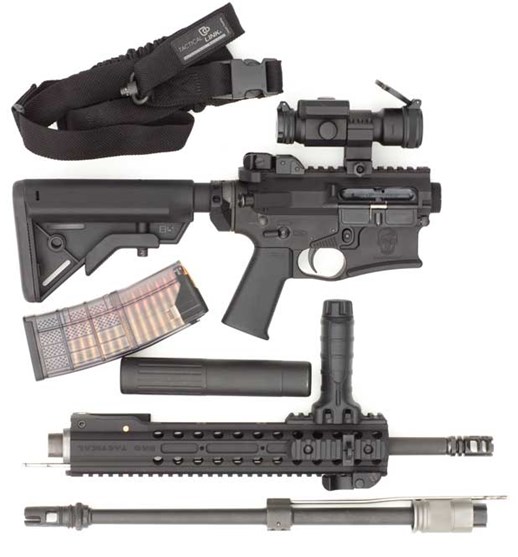
However normal of an AR the CDR-15 may appear to be, looks can be deceiving. With the throw of a lever and then some twisting and pulling, the user can break the CDR-15 down into three primary components (receiver/buttstock assembly, fore-end and barrel) that can be fit into an included 20”x16”x9” Plano hard case with custom-cut foam inserts. The result is the ability to transport a fully functional AR-pattern carbine easily, yet have it accessible very quickly. Of note is the fact that the upper receiver assembly of the CDR-15 can fit on any standard AR lower, and the takedown barrel system simplifies switching between calibers.
Takedown Steps
The actual process of disassembling and reassembling the carbine is a model of simplicity. To take down the CDR-15, you must first begin by 1) engaging the safety, clearing the firearm and locking open the action. Also, if it has been fired recently, make sure the barrel is cool enough to touch. 2) Next, you pull open the cam lock lever located at the lower right side of the fore-end just forward of the receiver and then pull out the captured rail-retaining pin that was concealed by the cam lock lever. 3) Slide the fore-end off the end of the barrel and then 4) unscrew by hand the now-exposed barrel nut where the barrel meets the upper receiver. 5) Once this is unscrewed, you can pull the barrel and gas tube assembly forward out of the upper receiver. It’s that simple. To reassemble, simply reverse the steps. The barrel nut only requires hand tightening when reassembling.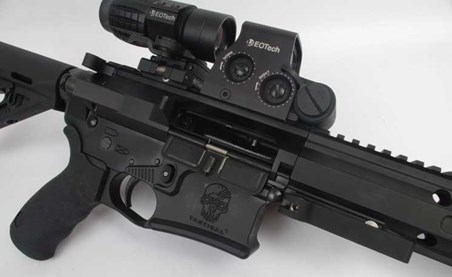
Takedown Step 1: Engage the safety and lock open the action.
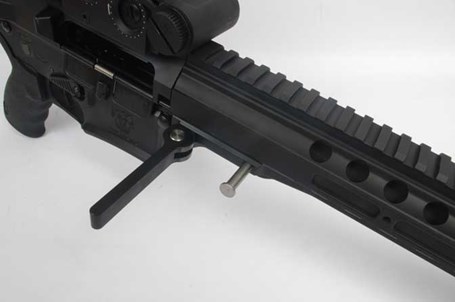
Takedown Step 2: Pull open the cam lock lever and then pull out the captured rail-retaining pin.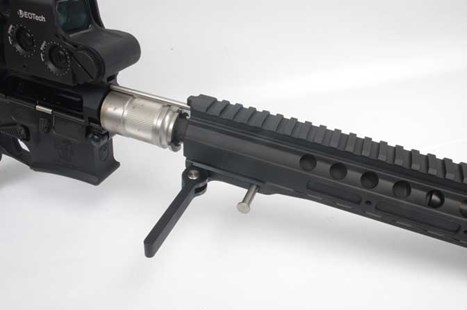
Takedown Step 3: Slide the fore-end off the end of the barrel.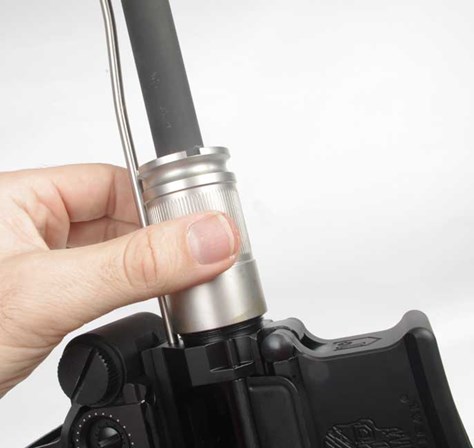
Takedown Step 4: Unscrew by hand the now-exposed barrel nut.
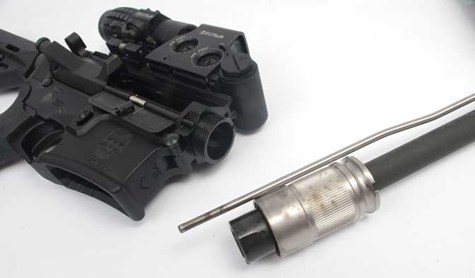
Takedown Step 5: Pull the barrel and gas tube assembly forward out of the upper receiver.
Hand On
When the test sample 5.56 mm CDR-15 showed up at the FFL I use, I thought the guys behind the counter had made a mistake when they put the box up on the counter. It seemed way too small to have a rifle (even a breakdown one) in it. The case neatly packed in all the necessary parts and came with two Magpul Gen M2 MOE 30-round magazines. The barrel assembly, fore-end and the receiver/buttstock assembly each had their own sections in the case, and I noted that there was room for an installed compact optic to fit in the case while attached to the upper receiver. There is also a lower section of foam below the rifle section cut out to accept a pistol, numerous spare magazines, accessories and also a suppressor.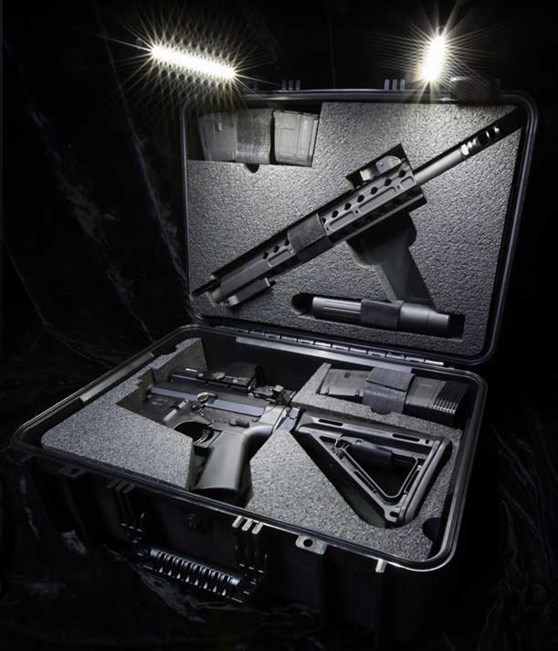
After a quick perusal of the instructions, I had the rifle together in less than 30 seconds (I have no doubt this time can be easily tightened up with some practice). Once together, the rifle proved to be hard to discern as a takedown model.
The entire CDR-15 sports a matte-black finish, from the steel parts such as the barrel to the hardcoat anodized Type III finish on the billet aluminum upper and lower receivers. All of the controls worked smoothly, and the entire rifle just felt solid. There was not a hint of looseness in any of the parts. The only thing I noted was that the dust cover door was a bit tough to get snapped closed, but it opened easily when the action was cycled. I also noted how slim and petite the complete rifle seemed. The fore-end is very compact and trim, and the empty rifle itself weighs just under 7 lbs.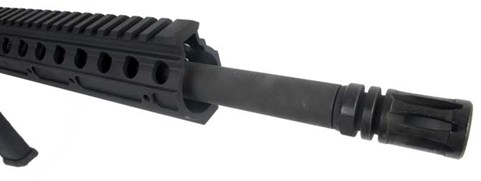
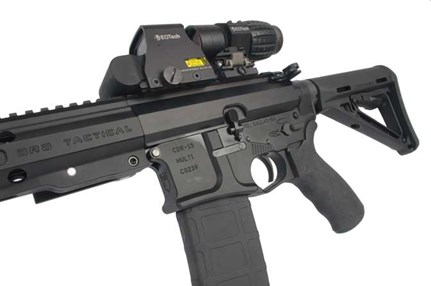
Once I had the CDR-15 home, I gave it a thorough inspection and then began setting it up for some range time. Although the DRD Tactical website lists the barrel’s rate of twist as 1:7", the barrel on my sample rifle had a 1:9" rate of twist. I had acquired a sampling of ammo with a broad range of weights for the tighter twist, but I decided to proceed with what I had as planned to see how it did.
As I wanted to keep a minimalist theme with this rifle for the testing (as I felt it was fitting for a rifle that can be broken down so compactly), I only fitted it out with an EOTech Holographic Weapon Sight (HWS) backed up by a matching EOTech 3X Magnifier unit on a flip-to-side mount. With this set up, I have the flexibility of an electronic sight that I can instantly switch between 1X and 3X. In addition, the two optical units would fit inside the CDR-15’s case while still mounted to the rail.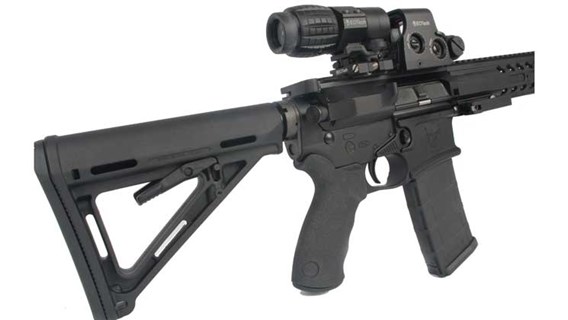
I headed out to the range with my selection of Australian Outback, Hornady and Winchester ammunition (ranging in weights from as light as 45 grains to as heavy as 75) and set up the rifle to put it through its paces. I started out with shooting from the bench at 100 yards for groups to see what the accuracy potential of the rifle was. To be honest, I was not sure what to expect with a rifle that I could take apart so quickly. I was pleasantly surprised by the performance of the CDR-15, particularly with the lighter bullet weight. This rifle is quite capable in the accuracy department with the right ammo. Topped off with the HWS backed up by the 3X magnifier, I was able to get a smallest group of 1.29" at 100 yards with the 45-gr. Winchester JHP load. It did not like the heavier 69- and 75-gr. loads as much (which was not surprising considering the rate of twist), but still performed well and pretty consistently with all loads.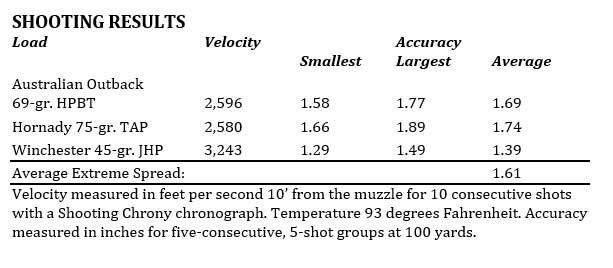
I also ran some full 30-round magazines through the rifle with the two included PMags and did not have a single malfunction. I also took the rifle down in the middle of the testing and reassembled it, and then tried it again at 100 yards. There was no significant point of impact shift with my 3X-powered EOTech optical system, and the rifle performed similarly as before.
Conclusion
Even without the takedown feature, this is a solid AR-pattern rifle. Throw in the fact that it can fit into a compact case, and it is downright amazing. While the 5.56mm CDR-15’s MSRP of $2,091 puts it at the higher end of the AR market, what is offered by the firearm seems to warrant it. Yes, you can get lower-priced direct gas impingement ARs in 5.56mm, but how many of them break down in seconds to fit inside a case? They are somewhat few and far between.
So, if the unique CDR-15 fits the bill of your needs for an AR rifle, then definitely give this interesting offering from DRD Tactical a look. For what it is worth, I think I am buying this one myself. For more information, visit drdtactical.com.
Specifications:
Manufacturer: DRD Tactical
Model: CDR-15
Caliber: 5.56 mm
Barrel: 16"
OA Length: 32.5-35.75"
Eight: 6.9 lbs. (empty)
Stock: Six-position, collapsible
Sights: None
Action: Direct gas impingement
Finish: Matte black
Capacity: 30+1
MSRP: $2,091





































